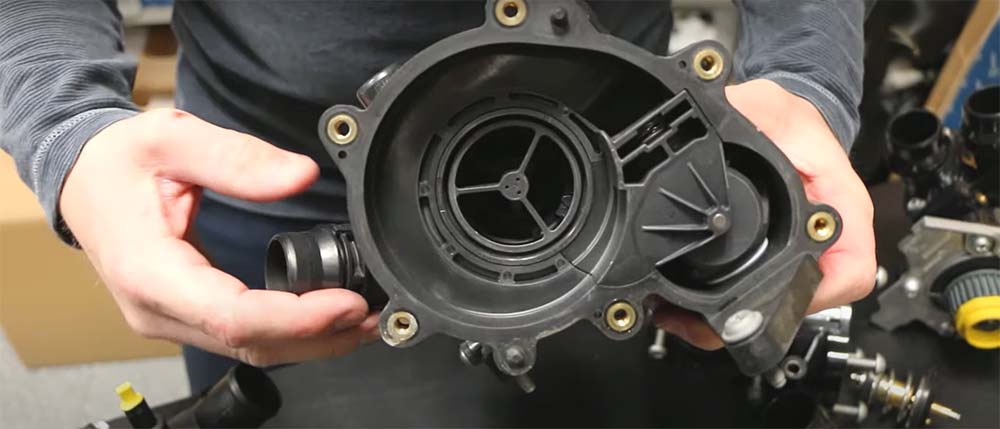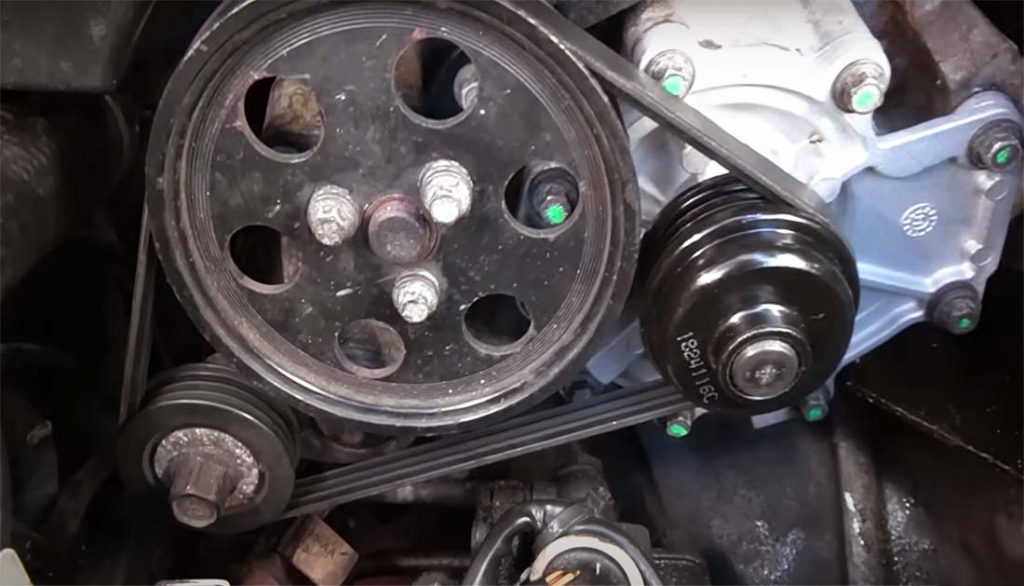The water pump is a crucial component in a vehicle’s engine, designed to ensure the motor maintains a consistent and safe operating temperature. It achieves this by circulating coolant through the engine block and radiator, facilitating heat dissipation from the engine to the air. This component’s function is vital for preventing the engine from overheating, which can cause significant damage, including warped components and engine failure. The water pump’s operation is mechanically powered, typically by a belt connected to the engine’s crankshaft, activating the pump’s impeller. This impeller plays a key role in the coolant flow process, ensuring the liquid is continuously moved throughout the engine’s cooling system.
Operational Dynamics of the Water Pump
In detail, how does a water pump work? The process begins with the engine’s drive belt spinning the pump’s impeller. This spinning action creates a centrifugal force that pulls coolant into the pump and then pushes it out into the engine. As the coolant travels through the engine, it absorbs excess heat, helping to maintain the engine at a manageable temperature. The heated coolant is then routed to the radiator, where it is cooled by air passing through the radiator’s fins. Once cooled, the coolant is recirculated back into the engine, and the cycle continues. This process is critical not only for preventing overheating but also for ensuring the engine operates efficiently, contributing to the vehicle’s overall performance and longevity.
Recognizing and Addressing Water Pump Failure
Failure of the water pump can lead to significant engine damage, making it essential to recognize the early signs of a problem. These include:
- Coolant leaks under the vehicle, often a telltale sign of a seal or gasket failure within the pump.
- Unusual noises, such as grinding or whining from the pump area, indicating bearing wear or impeller damage.
- Overheating, as shown by the temperature gauge or warning light on the dashboard.
- Steam or smoke emanating from the radiator, a sign of excessive engine heat not being properly dissipated.
Addressing these signs promptly by consulting a professional mechanic can prevent more severe issues. What happens when a water pump goes out while driving is a serious concern, as it can lead to engine overheating and potential breakdowns. For more detailed insights on identifying and responding to water pump issues, consider reading another article dedicated to this topic.

Maintenance Insights
Maintaining the water pump and the cooling system is key to vehicle longevity. Here’s a checklist for effective maintenance:
- Inspect coolant levels regularly, topping up and replacing as needed to ensure proper cooling capacity.
- Check for leaks frequently, paying close attention to the water pump area and other cooling system components.
- Listen for unusual noises from the pump, which could indicate bearing or impeller problems.
- Replace the water pump during timing belt changes if they share the same lifespan, as recommended by many manufacturers.
By following these steps, vehicle owners can significantly extend the life of their water pump and cooling system, ensuring reliable engine performance.
Conclusion
In summary, the water pump is a fundamental component of a car’s cooling system, essential for regulating the engine’s temperature. It ensures that the engine does not overheat by continuously circulating coolant through the engine’s passages and the radiator. This process is critical for the engine’s durability and performance. Over time, the water pump may wear out or malfunction, leading to potential overheating issues. Regular maintenance and prompt replacement of a failing water pump are crucial steps in preventing engine damage and maintaining the vehicle’s reliability. Recognizing the early signs of water pump failure, such as leaks, noises, or overheating, and addressing them quickly can save significant time and expense. Ultimately, taking care of the water pump means taking care of the engine itself, ensuring that the vehicle remains safe and efficient for its intended lifespan.

